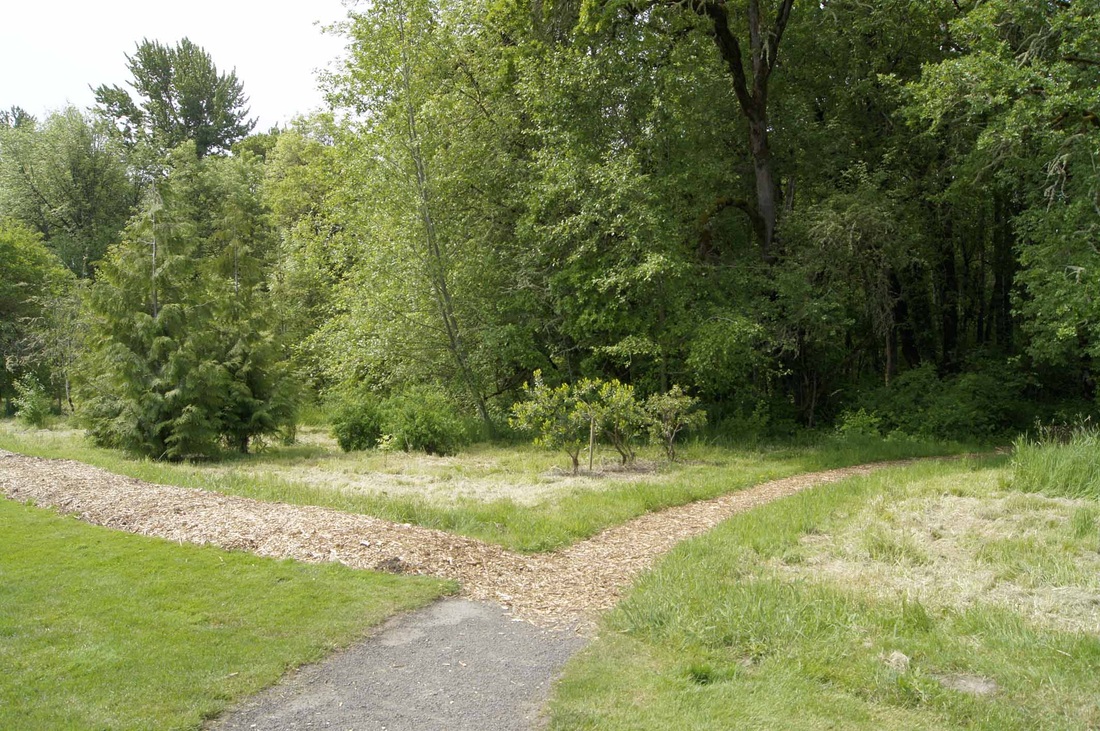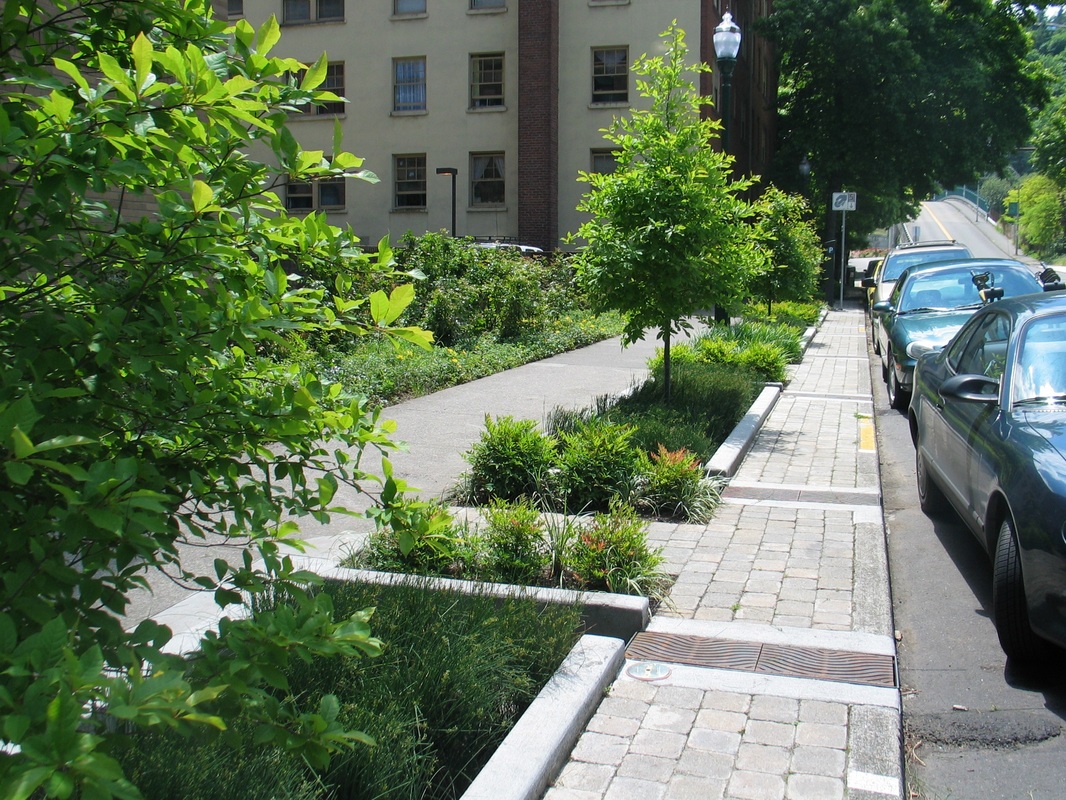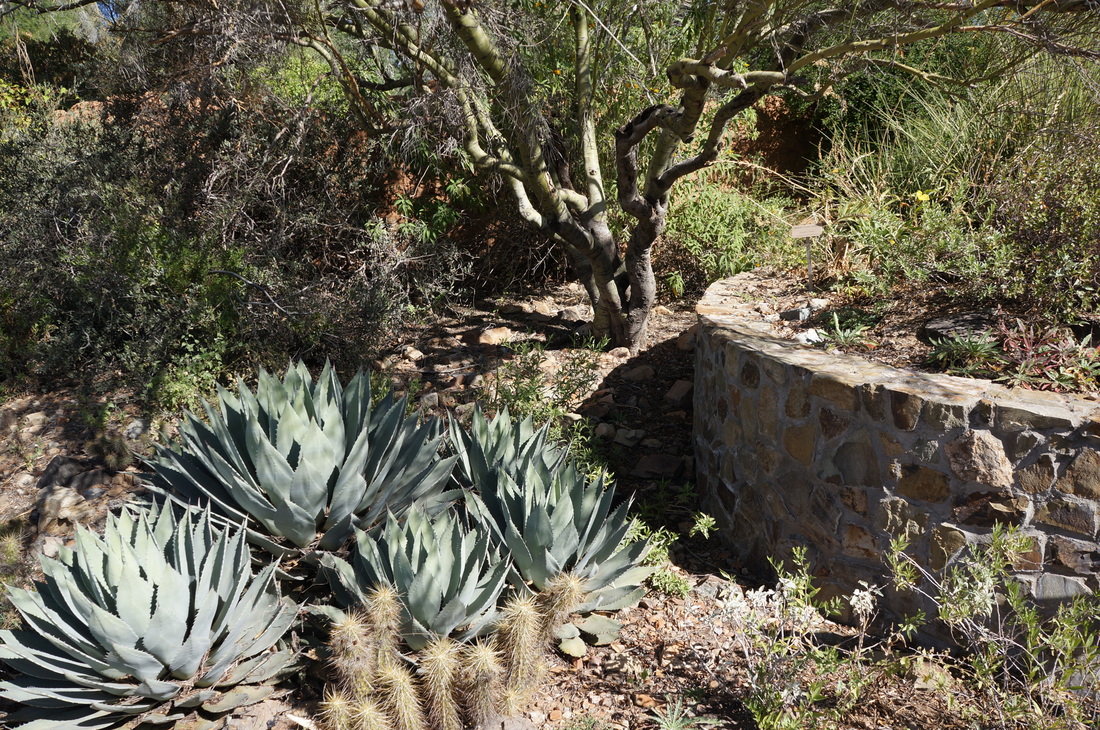SMALL PARK DESIGN + MAINTENANCE
INTRODUCTIONSmall park design specifically focuses on parks that are under 10 acres. Small parks, like all parks, must take into account the needs and desires of a wide variety of users, but unlike larger parks, these uses must be effectively designed into a smaller, often less varied, space. Management and funding is also an important concern (Phillips 1996), as it is with large parks, but as smaller parks tend to be physically smaller in size, draw from a limited surrounding user base, and have more specific programming, funding and management tends to be more of an issue for smaller parks. Designing for all potential user groups, as well as anticipated user needs, is an important step in proactively addressing issues that may eventually arise, and helps to secure a stable, long-term future for the park. Many small parks share a set of amenities, and when they are designed with consideration and thoughtfulness, can contribute greatly to the long-term success of a small park.
|
PICNIC AREAS
Picnic areas provide a specific destination within a small park, and bring users during many different times of day. Picnic benches should be arranged so that they are able to be used by both large and small groups, and are especially important gathering places for Hispanic families (Forsyth and Musacchio 2005). Other easily overlooked, but still important concerns are accessibility, shade, and pathways to and from the picnic areas (Phillips 1996). Providing gathering space of a social nature in a cultural and historic park will help to define a use for the park that is based on more than just tourism, and will help further integrate the site into the surrounding community.
|
PARKING LOTS
Under Phillips’ guidelines for park design, landscaping should be at least 10% of a parking lot design, with at least one tree for every 10 spaces (Phillips 1996). Although this may be considered adequate for more temperate climates, it is considerably more important to provide shade in parking lots in the desert, both for the people and cars using the lot, but also to mitigate the average asphalt parking lot’s contribution to the urban heat island effect. Plantings and trees in parking lot areas can also serve as a visual screen from a surrounding residential area (Phillips 1996). The design of the parking lot itself, as well as the design of areas buffering a nearby road, are also important attributes. The planted area within a parking lot can serve as a sort of landmark, as well as contributing to the scenic beauty of the surrounding area, making the small park a good neighbor.
|
TRAILSThere are a number of different ways that trails can be designed in small parks, taking into account the user base, as well as any attractions or other assets that need to be reached. Simple things, like designing long curves to discourage shortcuts (Phillips 1996) can be universally applied, or providing walking paths that provide a sensory experience (Forsyth and Musacchio 2005), which will keep visitors actively engaged. More specific design guidelines focus on providing accessibility, for instance, no higher than a 5% slope on walkways (Phillips 1996). Other features require more informed consideration; should the pathways be paved in cement or gravel, depending on the anticipated use, or should brick pavers be used, because they contribute more to the overall character of the park (Phillips 1996)? These are questions that must be answered on a case-by-case basis, depending on a number of factors unique to each individual small park.
|
STORMWATER MANAGEMENT
Managing stormwater can be an important factor in smaller park design, in areas that lack municipal stormwater management, and especially in the desert. It has also become best practice to manage stormwater on-site, instead of pushing it off for another party to deal with. Stormwater can be managed by traffic islands and parking lots to improve the overall quality of the groundwater (Phillips 1996); it can serve to highlight the greater hydrologic functions of the park and surrounding areas (Forsyth and Musacchio 2005); it can serve an important role in an arid climate to provide supplemental irrigation to vegetated areas; and can create habitat for wildlife and plants (Forsyth and Musacchio 2005). Looking at the myriad benefits that managing stormwater on-site has (not to mention the cost savings of not having to build costly stormwater infrastructure), it would be irresponsible to not consider stormwater management when designing the infrastructure of a small park.
|
MICROCLIMATEProviding a comfortable microclimate for park visitors is a very important aspect to park design. Without considering this factor, the user base for the park will likely be very small. When designing in more temperate climates, it is important to consider the creation of a number of different microclimates, such as seasonal shade, and warm sunny spots in winter (Forsyth and Musacchio 2005). In the desert, shade becomes the most important environmental condition to consider for overall visitor comfort.
Microclimate can be managed through several different means. Man-made and mechanized structures can be placed on-site; shade sails, cooling towers, misters, and other shade structures can all be utilized to manage microclimate. Though this can be a very effective technique, the setting and context of the site should be taken into consideration. There are other, more “natural” interventions that can manage microclimate and be more visually appropriate to a natural or historic small park. Water resources can come into play, considering the cooling effects that bodies of water have on the surrounding environment. Hydrologic approaches can also support plantings, such as trees, that can contribute to the greater evapotranspiration rate and create a climatic oasis (Forsyth and Musacchio 2005). Trees and other plants, and the shade that they provide, contribute immediately to microclimate management, and can serve further environmental functions by mitigating local air pollution, improving the quality of stormwater runoff, and providing habitat suitable to wildlife. |
WILDLIFEEcology is an important aspect of park design, though it is often considered secondary to human concerns. Parks, through their very existence, can contribute to the greater ecology of a region in contributing a patch to the overall habitat matrix. Even if the park is designed solely for human recreational purposes, it can still contribute to a greater ecological whole by preventing erosion, preventing proliferation of invasive species, buffering waterways, and more (Forsyth and Musacchio 2005). Parks can also be designed to provide visual, but not physical, access to certain areas, preserving the idea of “open space” while providing protected habitat for flora and fauna (Forsyth and Musacchio 2005). Serving wildlife and ecological function serves us all; “parks can connect people to plants, wildlife, history, and each other, and thus support interactions” (Carr et al 1992:24). Such practices as daylighting streams, for instance, can make visible to park visitors the ecologic functioning of an area beyond the scope of the park itself. Although it may be too much to ask of a small park for it to create habitat for large charismatic species, such as mountain lions or bears, small parks can be designed to accommodate generalist species, such as birds, insects, and pollinators. General guidelines for designing habitat in small parks for wildlife include connecting with other ecological corridors, maintaining a tree canopy and water source, and limiting human access in areas (Forsytn and Musacchio 2005).
|
PLANTINGS
Managing the planting plan for a small park is challenging, as plantings are very important in terms of their function; plantings help to create microclimate, buffer the park visually, create wildlife habitat, and filter stormwater. Planting native species is also important, especially in areas that are environmentally sensitive and/or susceptible to invasive plant species. However, strict native plantings are not always desirable, as “there is value to planting strategies that reflect historical patterns of urbanization, honor a region’s ethnic heritage, or use a mixture of local and exotic plants to highlight seasonal change and the sensory experience of a park” (Forsyth and Musacchio 2005:55). Plantings then do not serve only ecological or microclimatic functions, but instead can be agents of education and interpretation.
|
VOLUNTEERS
In an age where money and reliable maintenance are hard to come by, getting volunteers involved for the design and maintenance of a small park is of utmost importance. Small parks are ideally positioned to take advantage of volunteer efforts, as their small size makes such efforts seem manageable and volunteering is seen to have a more discernable impact. Especially if the park is a public amenity, designed to appeal to a wide segment of the population, a large pool of potential volunteers will potentially be created; “involved people are one of the most important features of a successful park” (Phillips 1996:6). Small parks are considered part of the daily ritual of life for its nearby users, and the participation of the public can help to ensure its long-term success (Forsyth and Musacchio 2005) in a way that no amount of design and maintenance ever can. Although in some instances the design of a small park can be helped along by public input, it is also effective for community groups to initiate small projects to upgrade the park after it is built (Forsyth and Musacchio 2005). Community involvement outside of the immediate neighbors is also important; park elements can be designed to complement local school curriculum (Forsyth and Musacchio 2005), or the park design and maintenance itself can be undertaken in partnership with local schools (Lancaster 1983). One thing is for certain; the more people actively involved in the outcome of a small park, the more of a long-term success it will guarantee.
|
STATE HISTORIC SMALL PARK DESIGN
Small parks that serve as more than just recreational facilities have their own unique design concerns and strategies, including more provisions for reconstructions, site works, interpretation, and visitor comfort (Lancaster 1983). Though these are common features to state historic parks across the board, each historic park has its own individual characteristics and challenges that must be addressed on a case-by-case basis.
|









